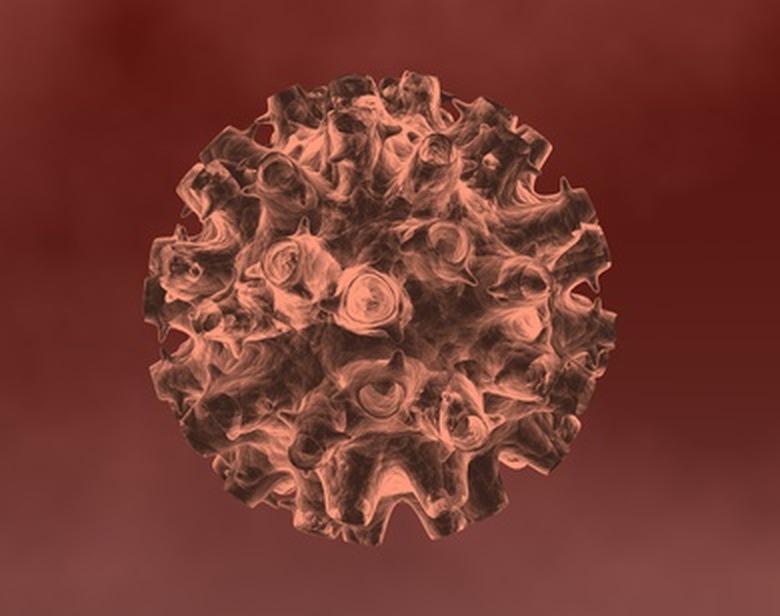How Do I Create A 7th Grade School Project Of A Virus Model?
Viruses come in many shapes and sizes. They are generally made up of four parts. The envelope is a protein rich outer covering made of protein harvested from a defeated cell. These envelopes can be round, spiral or rod-shaped. The envelope usually has some sort of spikes or hooks, or even a tail that helps the virus attach to a new cell to attack. Within the envelope is the core surrounded by a capsid and a matrix. The core contains the genetic material of the virus and is protected by the capsid. Between the capsid and the envelope lies the matrix.
Virus Model
Step 1
Choose a virus. For the purpose of this example, we will be making a round, rota virus. This is a common virus that can be found in nature and often affects young children. Different-shaped viruses can be modeled using different-shaped Styrofoam cores, or even several different colors of clay.
Step 2
Cut the Styrofoam ball in half. Paint the rounded side one color and label it "Envelope."
Step 3
Paint a circle in the center of the flat side in a color different from the envelope. Now choose a third color and paint a ring around the circle. Label the outer part, "Matrix." Label the center part "Core."
Step 4
Cut pipe cleaners in half. Twist two colors of pipe cleaners together to represent the double helix of RNA. The pieces can be about 3 inches long. Make two or three pairs and pin them onto the flat side. Label them "RNA." Viruses replicate their RNA from the genetic material found in healthy cells. They make hundreds of viral RNA from a single strand of human DNA. So, in a real virus, the RNA is fairly short, tangled and crammed into a very small space.
Step 5
Push a toothpick into the center of the rounded side of the ball. Push the rest of the toothpicks into the ball keeping the toothpicks as evenly spaced as possible. Rotavirus, like many viruses, has protein spikes that help the virus latch on to and invade healthy cells. Because viruses are simple, replicating organisms, it is important to keep these "protein spikes" as regularly spaced as possible.
Step 6
Roll 17 small clay balls. Stick a ball on the end of each of the toothpicks. Flatten balls slightly on the outside. Rotavirus has flattened shapes on the ends of each protein spike. These help the spikes adhere to the healthy cell.
Things Needed
- 6-inch Styrofoam ball
- 3 colors of paint
- Labels
- Colored pipe cleaners
- Straight pins
- Clay
- 15-20 toothpicks
Cite This Article
MLA
Braeuner, Shellie. "How Do I Create A 7th Grade School Project Of A Virus Model?" sciencing.com, https://www.sciencing.com/do-school-project-virus-model-6890983/. 24 April 2017.
APA
Braeuner, Shellie. (2017, April 24). How Do I Create A 7th Grade School Project Of A Virus Model?. sciencing.com. Retrieved from https://www.sciencing.com/do-school-project-virus-model-6890983/
Chicago
Braeuner, Shellie. How Do I Create A 7th Grade School Project Of A Virus Model? last modified August 30, 2022. https://www.sciencing.com/do-school-project-virus-model-6890983/
